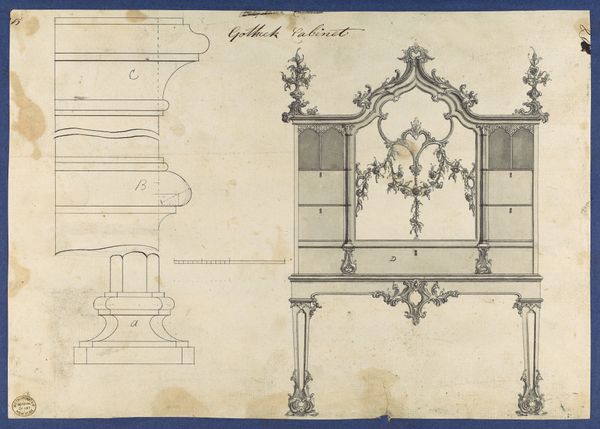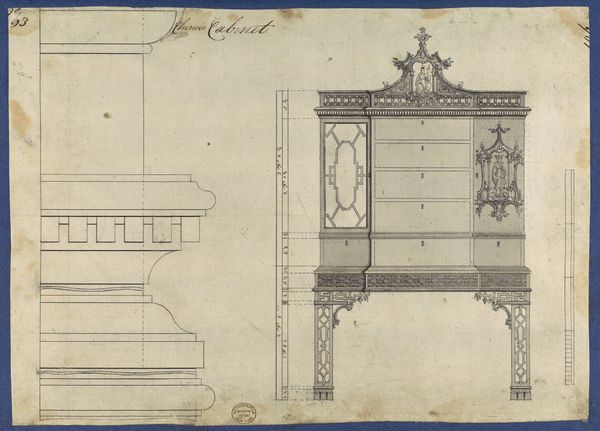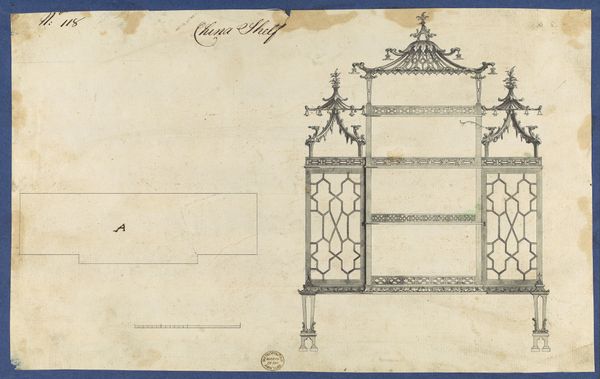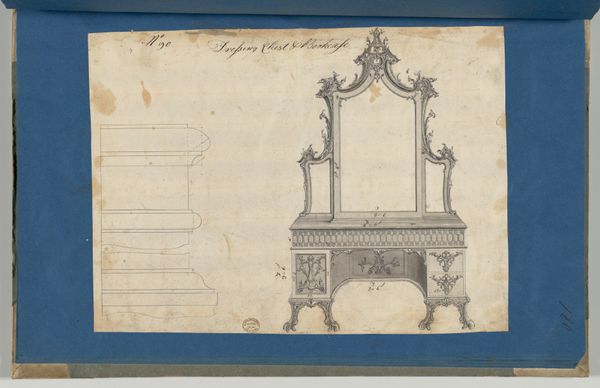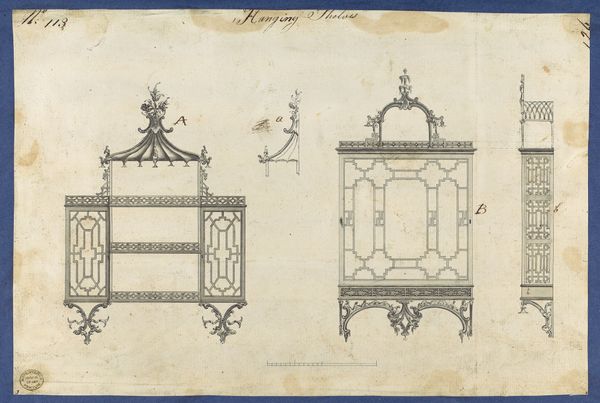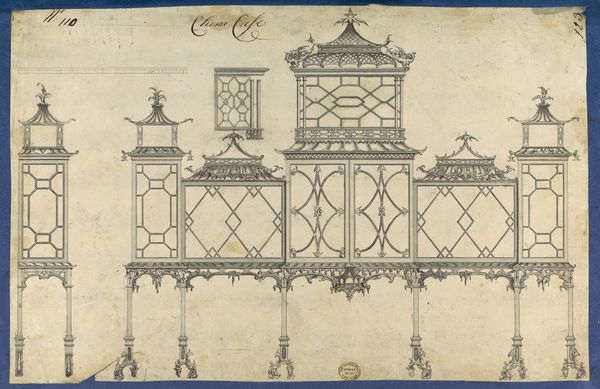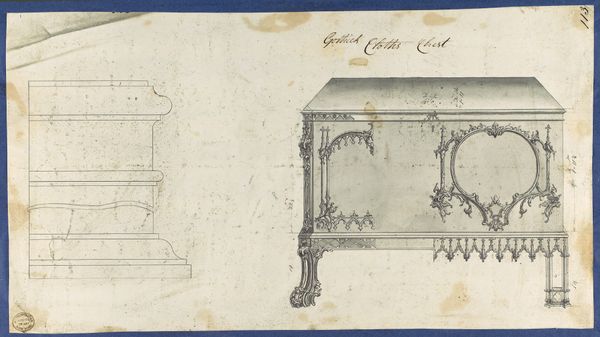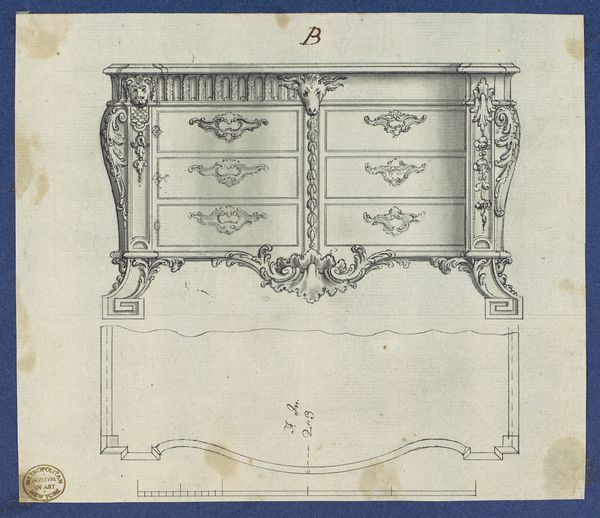
China Case, from Chippendale Drawings, Vol. II 1754
0:00
0:00
drawing, print, paper, ink, pen
#
drawing
#
neoclacissism
# print
#
paper
#
form
#
ink
#
geometric
#
line
#
pen
#
academic-art
#
decorative-art
Dimensions: sheet: 8 3/8 x 12 1/8 in. (21.3 x 30.8 cm)
Copyright: Public Domain
This is a design for a China Case, made by Thomas Chippendale probably sometime in the mid-18th century, rendered in ink on paper. The drawing offers us a glimpse into the workshops of the period. The design itself is an exercise in controlled ornamentation, with geometric fretwork, a pagoda-like crown, and neatly proportioned moldings. But let's not forget the human labor required to transform this vision into reality, and to extract these shapes from timber. The so-called China Case speaks to an important aspect of 18th century culture: trade with the far East. The whole point of a piece of furniture like this was to display porcelain, lacquerware, and other precious objects brought back on ships controlled by the East India Company, often through exploitation of resources and labor. Chippendale here wasn’t just designing a beautiful object; he was participating in a global network of exchange and consumption. When we appreciate an object like this, we acknowledge the incredible skill involved in its crafting, and also the complex and sometimes uncomfortable context in which it was made.
Comments
No comments
Be the first to comment and join the conversation on the ultimate creative platform.

